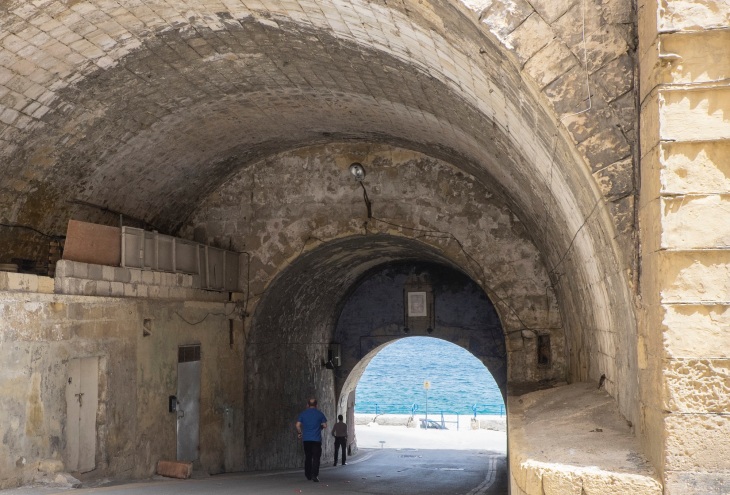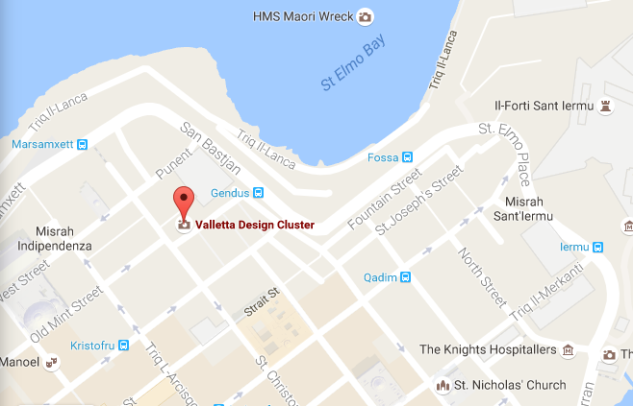 Urban and social changes in Valletta in the past few decades, and especially in the last few years, have brought to the surface a number of issues that are directly effecting the liveability of Valletta. These challenges have a plurality of sources and causes, and are influenced by changes happening on the social, cultural, infrastructural, economic, and governance levels. The location of the Valletta Design Cluster at the heart of one of the residential neighbourhoods of Valletta, as well as its status as one of the Valletta 2018 flagship projects, have triggered an increased awareness about the interactions and mutual dependence between these various factors. This has in turn provided a more focused impetus to ensure that such initiatives rope in the contribution of citizens, be they residents or other regular city users, in the planning and execution of projects that will be having a lasting impact on the city’s liveability and vitality. In addition to this, by tapping into contemporary design practices the Valletta Design Cluster intends to channel holistic, multidisciplinary and inclusive processes aimed at using design to enhance the experience of living and visiting the city.
Urban and social changes in Valletta in the past few decades, and especially in the last few years, have brought to the surface a number of issues that are directly effecting the liveability of Valletta. These challenges have a plurality of sources and causes, and are influenced by changes happening on the social, cultural, infrastructural, economic, and governance levels. The location of the Valletta Design Cluster at the heart of one of the residential neighbourhoods of Valletta, as well as its status as one of the Valletta 2018 flagship projects, have triggered an increased awareness about the interactions and mutual dependence between these various factors. This has in turn provided a more focused impetus to ensure that such initiatives rope in the contribution of citizens, be they residents or other regular city users, in the planning and execution of projects that will be having a lasting impact on the city’s liveability and vitality. In addition to this, by tapping into contemporary design practices the Valletta Design Cluster intends to channel holistic, multidisciplinary and inclusive processes aimed at using design to enhance the experience of living and visiting the city.
By adopting the concept of common space and of commoning as a constructive, proactive and creative approach, an overarching vision stretching from 2016 to the year of the European Capital of Culture and beyond is being adopted for this initiative. The idea of common space evokes here the set of special relations produced by ‘commoning practices’ as articulated by Stavros Stavrides, when he states: “Opening the community of those who share common worlds, opening the circles of sharing to include newcomers, opening the sharing relations to new possibilities through rethinking of sharing rules and opening the boundaries that define the pace of sharing “ (Stavrides: 2016).
For each year between 2016 and 2019, these practices of Commoning shall be explored within different contexts inside and outside of Valletta, in all cases bringing together the associated elements of design and technology as tools, and well-being and livability as targets for redefining common spaces in society. The scope of the annual initiatives might be circumscribed by specific urban spaces but could also consist of more intangible social spaces, such as organisations, businesses, and civil society.
 Design4DCity 2016 shall serve as the pilot initiative for this four year process, focusing primarily on the neighbourhood of the Old Abattoir in Valletta, the area immediately surrounding the site of the new Valletta Design Cluster. The map below indicates the perimeter of the Cluster’s immediate neighbourhood, although for Design4DCity this should not be taken to restrict the inclusion of other spaces in the area or even inside Valletta as a whole.
Design4DCity 2016 shall serve as the pilot initiative for this four year process, focusing primarily on the neighbourhood of the Old Abattoir in Valletta, the area immediately surrounding the site of the new Valletta Design Cluster. The map below indicates the perimeter of the Cluster’s immediate neighbourhood, although for Design4DCity this should not be taken to restrict the inclusion of other spaces in the area or even inside Valletta as a whole.
